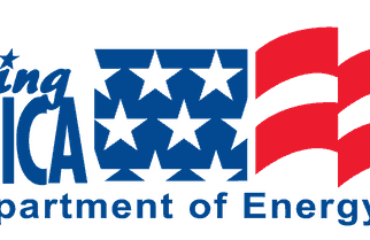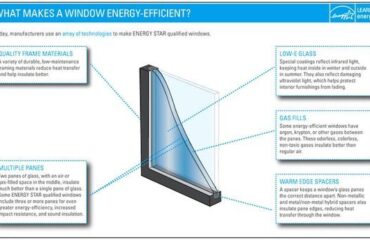Building Envelope Commissioning (BECx)

“Building Envelope Commissioning” or “Building Enclosure Commissioning”
The terminology is so new we’re not sure which term will stick… so we’ll start with what we like. “Envelope” sounds more lovely than “enclosure.”
“Building Envelope Commissioning (BECx) comes to the San Francisco Bay Area”
For centuries we’ve understood air infiltration and moisture intrusion waste energy and wreak havoc on buildings. The costs of energy consumption and water damage far outweigh the relatively minor costs of addressing these common pitfalls thoroughly during design and construction. Enter… the Building Envelope Commissioning Agent (BECxA)!
Air-Tight:
In the 70’s “air tightness” was realized as a major component of energy efficiency. If a building does any active conditioning (heating or cooling) it will become more efficient if made more air-tight. After tightening up our buildings and not accounting for increased ventilation needs… numerous indoor air quality problems quickly became apparent. Some energy efficient buildings became “sick buildings,” and it took years to evolve the now popular phrase “build tight, ventilate right.” This is now the mantra of energy efficiency and building science geeks (like us) around the country.

Building Enclosure Commissioning Agent BECxA
We’re too busy inside geeking-out on building science websites or you’d hear us marching in the streets – “Build Tight! Ventilate Right!”
So the build-tight team pushes for air-sealing at most any cost. These folks LOVE caulk and foam insulation (stereotype alert). It is challenging, but not impossible, to create a relatively air-tight building without foam or excessive amounts of sealants This is definitely the exception and not the rule, but in trying to stay away from wet-applied materials and halogenated flame-retardants your material palette is severely limited.
Recently the field of Building Performance testing has blown up with the advent of blower door, duct blasting, and thermal imaging analysis. California’s Home Energy Rating System (HERS) and the Building Performance Institute (BPI) have created rigorous training and verification testing programs to quantify building air leakage rates. In 2013 ALL major remodels and new construction projects in CA will require building performance testing.
Most of our building stock is existing buildings. Many “home performance contractors” now low-ball the testing scope of work and make their living by air-sealing and installing new insulation. The public hasn’t caught on the obvious conflict of interest: Same person does pre-test (“your building leaks and you need to make it air-tight”), charges for air-sealing (“we accept cash and all major credit cards”), and eventually does the test out (“darn we did a great job!”). They chant “Air-Tight!,” all the way to the bank.
Waterproof:
Only in the past decades has the field of waterproof consulting emerged as an industry-accepted expertise. On high-end projects having a waterproofing consultant review design details and verify field installations is not uncommon. But there is a severe limitation to traditional waterproofing consulting – they only focus on liquid water!
As the design community has adopted more air-tight construction practices and the chemical companies have developed more impermeable materials, water vapor has become a MAJOR contributor to mold growth and water damage in buildings. The most common problem starts with humid air (water vapor) condensing on cold surfaces indoors inside walls and roof assemblies. In humid climates the humid air may infiltrate wall cavities from outdoors. In drier climates the humid air may come from occupant lifestyles such as long showers or boiling water without running the exhaust fan, or from mechanical failures such as faulty exhaust ducts and flues.
Longstory short, damp air reaches dew point on colder surfaces and results in condensation (liquid water) that can have devastating effects on building materials. Concrete, steel, wood, insulation – you name it! – can be destroyed by water vapor, but traditionally waterproofing consultants have only focused on surface and rain water.
Waterproof consulting is a tremendously litigious environment, and therefore their world is filled with lawyers. Do you think their contracts omit liability to water damage resulting from condensation (water vapor) issues? You bet they do!
So what is an owner/developer to do?
In 2006 the National Institute of Building Sciences (NIBS) created guidelines for commissioning enclosures . Now there is a standardized process for an independent third-party working directly for the owner to clearly define project goals, ensure air-tightness and vapor control are properly addressed in the construction documents, and verify installation of air-sealing and good vapor control measures during construction.
This individual is known as the Building Envelope Commissioning Agent (BECxA). Their full scope is clearly laid out by NIBS, but most often it includes the minimum following measures:
BECx Pre-Design Consulting
- Work with the Owner to develop Owner’s Performance Objectives (OPO) or Owner’s Project Requirements (OPR): This can be in the form of a word document listing the Owner’s priorities. It can be as detailed as precise air changes per hour in terms of air tightness or general like energy efficient, climate responsive design. This document is used to orient each new team member to the Owner’s priorities and acts as a Benchmark against which to measure the end project result.
- Development of initial Commissioning Plan / Schedule: This will list the deliverables to be provided by various team members to the Cx for review and their timelines. It will also list Cx review time.
BECx Design Phase Services
- Review Architect’s design concepts against the Owner’s Performance Objectives (OPO).

- Develop computer simulations for daylighting (spot, skycalc) and solar orientation (sketchup) and energy efficiency (HEED, Climate Consultant).
- Assist with material / building product selection, especially windows & doors, glazing, skylights, insulation, sealants and finish materials (for light reflectance and IAQ), landscaping for shading criteria and heat island effect.
- Review project drawings and specifications for conformance of goals stated in the OPO and from point of view of air tightness, water proofing and IAQ concerns like mould. This also includes review for LEED/ GPR/ LBC goals.
- Develop enclosure commissioning specification and identify responsibilities of the GC and subcontractors.
- Perform final review of bid documents.
Construction Phase
- Evaluate submittals, shop drawings and Request For Information (RFI).
- Oversee construction of mock-up and perform testing with documentation, observations, comments, and recommendations.
- On-site review and field testing of installations.
- Attendance at relevant site meetings.
Operations & Maintenance Phase
- Warranties and close-out documentation : Cx has to review all warranties, manuals, maintenance instructions etc provided by GC at close-out and ensure Owner has a complete package.
Call us next time you have a design or construction project and we’re happy to lend a hand in ensuring owner goals are achieved for energy efficiency, air quality, and occupant comfort.



